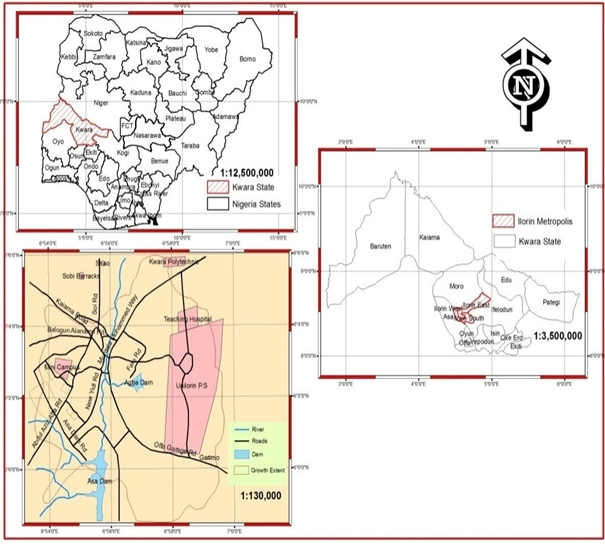Assessment of Radionuclide Concentrations in Catfish and Tilapia fish from Asa-Dam Ilorin, North-central Nigeria
Keywords:
Gamma ray spectrometry, Absorbed dose, Effective dose, Radiation hazard indices, Excess lifetime cancer riskAbstract
High concentration of naturally occurring radionuclides in food can have adverse effect on human health. Radioactivity measurement of radionuclides in Catfish and Tilapia fish samples from Asa-Dam Ilorin, Nigeria was carried out using gamma ray spectrometer technique. The results of the gamma ray spectrometry were utilized in the estimation of some radiological parameters in the bid to effectively determine the extent of the health implications as regards to radiation from the consumption of fishes in that area. The mean activity concentrations of 40K, 238U and 232Th for Catfish are 37.90±2.83, 8.08±2.71 and 11.73±2.51 Bqkg-1, respectively. Similarly, the mean activity concentrations of 40K, 238U and 232Th for Tilapia are 26.31±3.67, 6.16±2.47 and 8.89±2.19 Bqkg-1, respectively. The mean values of 40K, 232Th and 238U in Catfish were observed to be high when compared to Tilapia. The average absorbed dose rate for both Catfish and Tilapia samples were 12.40 and 9.31 nGyh-1. The mean annual effective doses were 29.65, 276.81, 52.04, 41.10 and 35.00 μSvy-1; 22.41, 209.10, 38.99, 30.93 and 26.43 μSvy-1 for adult, fishermen, 5 years, 10 years and 15 years, respectively for cat and Tilapia fish. The estimated excess lifetime cancer risk for adult, fishermen, 5 years, 10 years and 15 years were 0.10, 0.97, 0.18, 0.14, and 0.12 and 0.09, 0.85, 0.16, 0.13 and 0.11 for both Catfish and Tilapia, respectively. The results of all the radiological parameters estimated showed trends that are generally low, hence, poses no significant radiological health burden.

Published
How to Cite
Issue
Section
Copyright (c) 2023 M. M. Orosun, Q. T. Lawal , E. O. Ehinlafa, G. B. Egbeyale, G. O. Okwajebi, A. D. Adewuyi

This work is licensed under a Creative Commons Attribution 4.0 International License.




